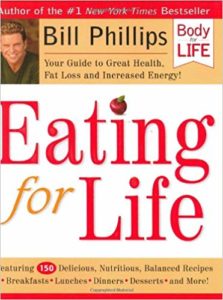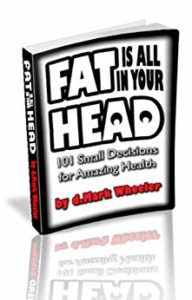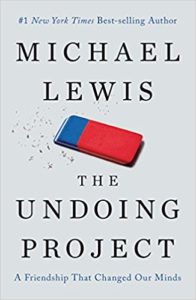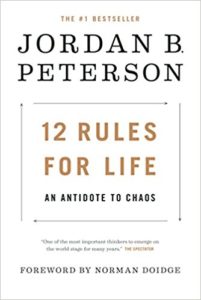
Have you ever thought about how Food affects your Mindset? When you think about it, if you aren’t fueling your body with the right foods it is nearly impossible to perform at your best, either physically or mentally. Your food can also impact your mood… we have all been “Hangry” at one time or another (to quote a Snickers commercial). But is a candy bar really the right long term solution? This article will address what goes into developing and implementing a successful Food Mindset. In other words, we will cover what you need to do to improve your body & mind through the food you eat.
3W’s for developing a successful Food Mindset
(1) Why do you eat? Are you eating for Health or for Fun? Are you usually eating to create your Best Body? Or is taste more important than nutrition for you? Does your food support a lean, low-fat body so that you are not carrying excess weight that will slow you down on the court? Or do you rely on food as a “drug” to manage your mood?
A clear idea of your motivation(s) when it comes to food will help you make better choices and stick to a plan that supports you reaching your potential on the court and in the classroom.
(2) What to eat. Do you have the knowledge you need so you know WHAT foods are the best to eat? Are you aware of what NOT to eat as well? There are many competing ideas when it comes to nutrition… from fad diets to traditional approaches to the latest research, so it can be nearly impossible to know everything.
I like to keep things simple. The first thing you need to know are the basic food groups… Fats, Proteins, Carbs. Within these groups there are good foods and bad foods. For example, there are “slow carbs” like veggies that boost your blood glucose level over a longer time versus “fast carbs” like pasta, sugary foods or soda which causes your blood glucose to spike to high levels quickly and then crash back down leaving you craving more food.
By converting food into blood glucose your body fuels your brain and muscles. This is how what you eat can have a huge impact on how you feel and how you will be able to perform.
As important as knowing WHAT to eat is knowing what NOT to eat (or at least limit as much as possible). There are three things (the 3 S’s) that are at the top of the list of foods to avoid… Sugar, Soda and Syrup.
Sugar is the ultimate “fast carb” and it shows up in more foods than you might imagine. It is not just candy. Sugar is included in things like bread, pasta and many other “fast carbs”. Quick note: veggies are ‘slow carbs’. Fruits are ‘fast carbs” but not quite in the category of sugars since fresh fruit often has fiber that helps your digestion system.
The second ‘S’ is Soda. Soda drinking is often just a habit, especially for young athletes. If you can change your “default drink” to water, your taste buds will adapt and eventually you won’t even want the sicky-sweet taste of sodas. Note: Diet Sodas are not the same as water, even if they claim ‘zero calories’. They are loaded with chemicals that are not doing your body any favors. Learn to drink water 1st !
The third ‘S’ is Syrup, in particular High Fructose Corn Syrup or HFCS. Don’t be tricked by the fact that it has “fructose” in the name and that is the sugar typically found in fruit. Plus it comes from corn, so how bad can it be? Plenty bad. It is even sweeter than sugar and is in almost every prepared food you find in the supermarket. Check food labels and work to remove it from your diet. Note: It won’t be easy… but with work it is possible.

A good book on the subject of food for athletes is Bill Phillips’ “Eating for Life”(Amazon link). This book was a follow up to his successful book, “Body for Life“, (Amazon link ) which also has some great ideas to help you improve your Food Mindset .
(3) When do you eat? Your body is designed to handle time periods where you have plenty to eat as well as time when there is nothing to eat. In today’s society, we usually have plenty of food and, putting aside the quality of the food we choose to eat, the quantity of food nowadays is probably the largest contributor to the obesity epidemic.
Athletes are not exempt from obesity. As the saying goes, “You can’t out run a bad diet.” so no matter how hard you work out, you still need to dial in your diet. On top of that, few people today are choosing to ‘not eat’ and activate the “Fasting Protocol” portion of their metabolism.
The good news is that you don’t need to go without food for days and days to get the benefits of Fasting. Intermittent Fasting is when you limit WHEN you eat to a certain part of the day, usually 8 – 12 hours. This gives your body a chance to ‘fast’ for 12-16 hours every day and the result is that many of the ‘weak cells’ in your body don’t survive the fasting process. This leaves you with a higher percentage of healthy cells and since we are always making new cells we won’t miss the weak ones who get eliminated.
Side note: It has been shown that fasting for 3-5 days prior to chemo treatment makes the treatment more effective and reduces the side effects. Did you know that while cancer cells replicate faster than normal cells, they are also dependent on the availability of sugar (blood glucose) and are also weaker than healthy cells.
Implementing a successful Food Mindset
Once you know the 3W’s: Why you are eating, What you need to eat and When to eat, there are three key concepts that will turn your knowledge and motivation into a successful Food Mindset. They are Mental Discipline, Hydration and Personal Identity.
Mental Discipline
Mental Discipline is a skill that can be developed but it is much easier to build habits that allow you to conserve your mental willpower for other challenges you will face throughout the day.
One way to cultivate mental discipline / food habits is to build a “cheat day” into your diet. Just knowing that you have one ‘cheat day’ per week can give you discipline to eat better for the other 6 days. You will probably find that even on your cheat day, you will eat better because “eating right” has become a habit as part of those other six days per week.
 Another way to develop Mental Discipline is to use the power of both Plan & Process thinking. Coach Wheeler is developing a short (~10 minute) speech on creating a vision for your life. Part of that speech explains Plan vs. Process thinking. (Link to Coach Wheeler’s YouTube video – this is an early practice speech at Toastmasters).
Another way to develop Mental Discipline is to use the power of both Plan & Process thinking. Coach Wheeler is developing a short (~10 minute) speech on creating a vision for your life. Part of that speech explains Plan vs. Process thinking. (Link to Coach Wheeler’s YouTube video – this is an early practice speech at Toastmasters).
In short, Plan thinking is having a goal and figuring out the steps you need to achieve that goal. Process thinking is geared toward “winning each moment”. It is setting up processes that will lead “in the direction” of what you want. Process thinking is built on the idea that you might not be able to control the outcome of every step in your plan. But you can control how you approach everything you do on a day-by-day, moment-by-moment basis. When Plan & Process thinking are combined (with a clear Vision and Focused action… mentioned in Coach Wheeler’s video), your chances for success are greatly increased.
Translating this into your Food Mindset means that you have a Plan for the food you are going to eat. Plus you can execute that plan by implementing the Processes that produce success. Some process examples might include how you do the shopping, cooking and eliminating sources of bad choices. If you “win the shopping”, you are much more likely to have good food. Can you “win the cooking” and you set yourself up to eat better? By eliminating bad foods from your environment, you are making it easier to follow your plan.
Hydration
Hydration is one of the easiest things to overlook when it comes to your Food Mindset. As mentioned earlier, making water your default beverage is a good start. It offsets other (bad) alternatives such as soda but there is more to the story when it comes to water. Your body needs water. In fact, we are MOSTLY WATER and when our body is low on water, we often interpret it as “hunger”. It is always a good idea to drink some water when you first feel hungry. This way you aren’t taking in extra calories when you are really just thirsty.
Hydration is critically important for athletes. It is good to imagine that “sweat is weakness leaving your body”. You also have to replenish the water in your body to operate at your best. Keep in mind… we are losing water through evaporation even when we are not soaked in sweat. Every breath leaves with a bit of water. (That’s what you see in the winter when you can see your breath.) Every time you go to the bathroom, your body is using water to eliminate waste from your system. That’s why you need to be aware of your hydration level.
A good way to look at hydration is to monitor the color of your pee. If it is dark yellow, you are dehydrated. If it is almost colorless, you are probably in good shape. Note: This is a guideline and does not address illnesses that might affect the color of your urine. I don’t pay a doctor online … or in real life, so get medical attention if something seems out of line.
Identity
 Finally, the last part of your Food Mindset is your Identity. This is how you see yourself.
Finally, the last part of your Food Mindset is your Identity. This is how you see yourself.
Are you an athlete (so you eat good foods that allow you to perform at your best)? Or are you a generally lazy person who eats whatever is offered or “tastes good”? Y0ur identity shapes all of your decisions in life, not just food. If you want to learn more about how you can shape your identity so it supports your Food Mindset, check out Coach Wheeler’s book, “Fat is all in your Head“. It starts out with the story of how Coach Wheeler lost over 50 pounds by changing his thinking.
Bottom Line…
Your Food Mindset is up to you. It can impact all areas of your life. The sooner you take control of the food you put in your mouth, the sooner you will start to achieve your potential. On the other hand, you could continue to let it slide. And your goals will continue to slide away from you as well. The choice is yours. Please leave a comment below and tell us what you decide!


